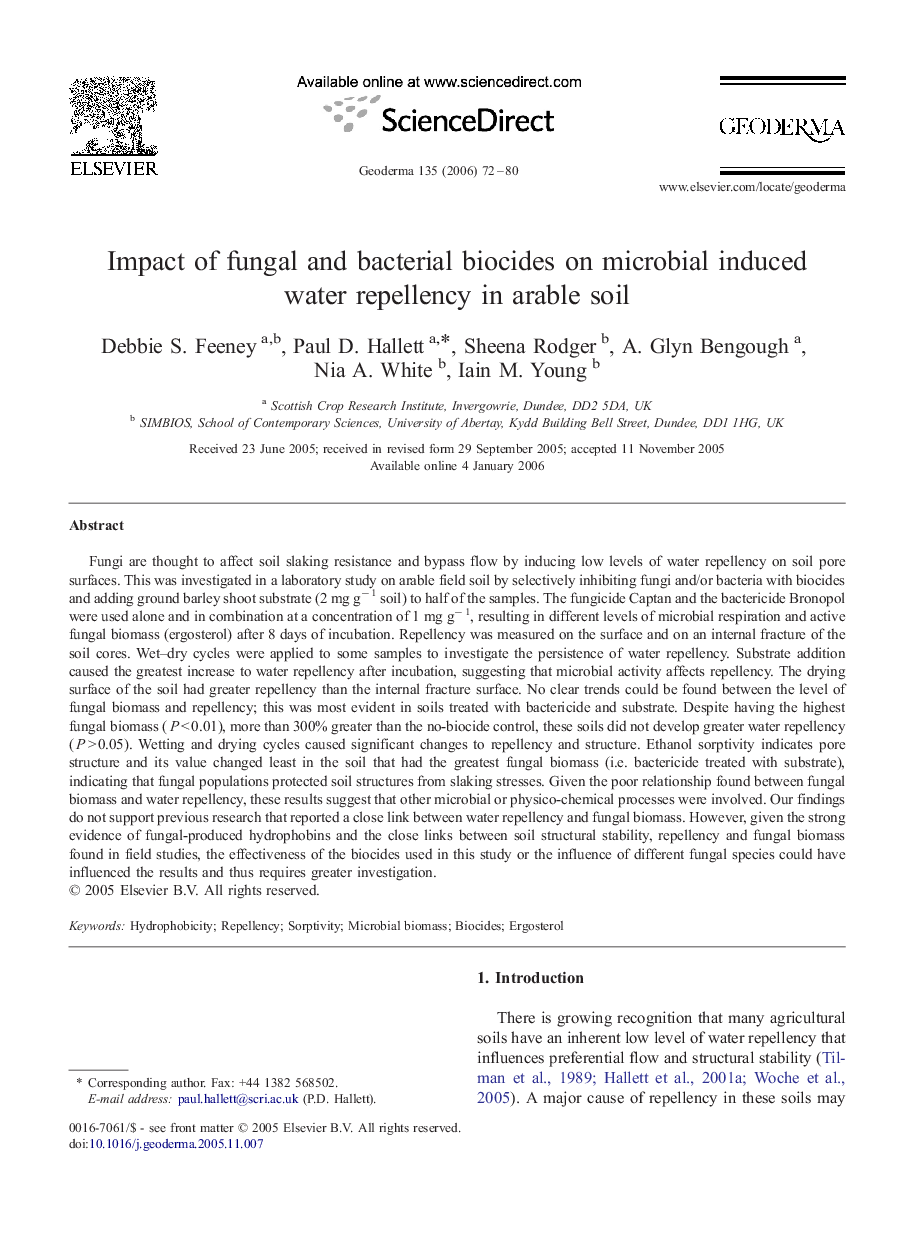| کد مقاله | کد نشریه | سال انتشار | مقاله انگلیسی | نسخه تمام متن |
|---|---|---|---|---|
| 4575710 | 1629562 | 2006 | 9 صفحه PDF | دانلود رایگان |

Fungi are thought to affect soil slaking resistance and bypass flow by inducing low levels of water repellency on soil pore surfaces. This was investigated in a laboratory study on arable field soil by selectively inhibiting fungi and/or bacteria with biocides and adding ground barley shoot substrate (2 mg g− 1 soil) to half of the samples. The fungicide Captan and the bactericide Bronopol were used alone and in combination at a concentration of 1 mg g− 1, resulting in different levels of microbial respiration and active fungal biomass (ergosterol) after 8 days of incubation. Repellency was measured on the surface and on an internal fracture of the soil cores. Wet–dry cycles were applied to some samples to investigate the persistence of water repellency. Substrate addition caused the greatest increase to water repellency after incubation, suggesting that microbial activity affects repellency. The drying surface of the soil had greater repellency than the internal fracture surface. No clear trends could be found between the level of fungal biomass and repellency; this was most evident in soils treated with bactericide and substrate. Despite having the highest fungal biomass (P < 0.01), more than 300% greater than the no-biocide control, these soils did not develop greater water repellency (P > 0.05). Wetting and drying cycles caused significant changes to repellency and structure. Ethanol sorptivity indicates pore structure and its value changed least in the soil that had the greatest fungal biomass (i.e. bactericide treated with substrate), indicating that fungal populations protected soil structures from slaking stresses. Given the poor relationship found between fungal biomass and water repellency, these results suggest that other microbial or physico-chemical processes were involved. Our findings do not support previous research that reported a close link between water repellency and fungal biomass. However, given the strong evidence of fungal-produced hydrophobins and the close links between soil structural stability, repellency and fungal biomass found in field studies, the effectiveness of the biocides used in this study or the influence of different fungal species could have influenced the results and thus requires greater investigation.
Journal: Geoderma - Volume 135, November 2006, Pages 72–80